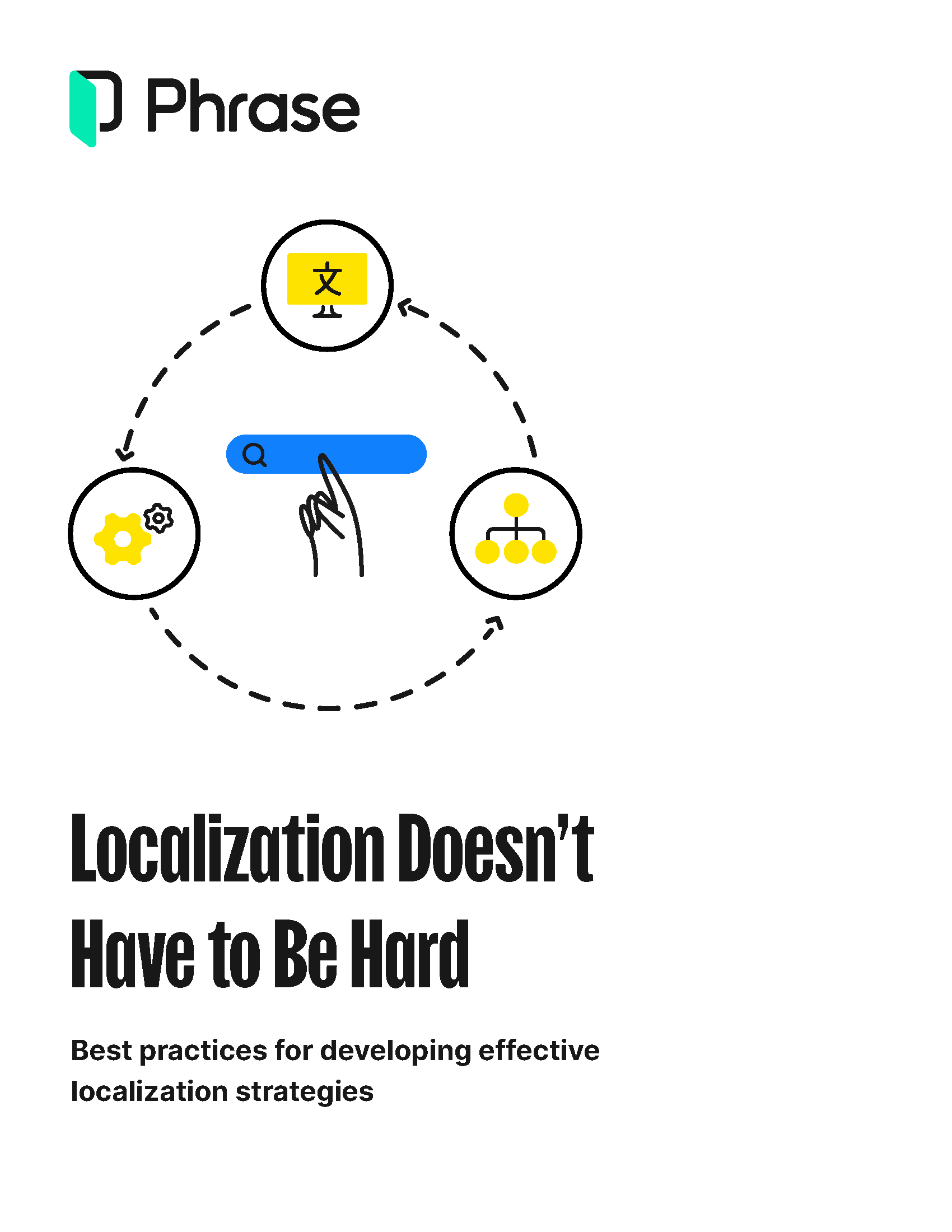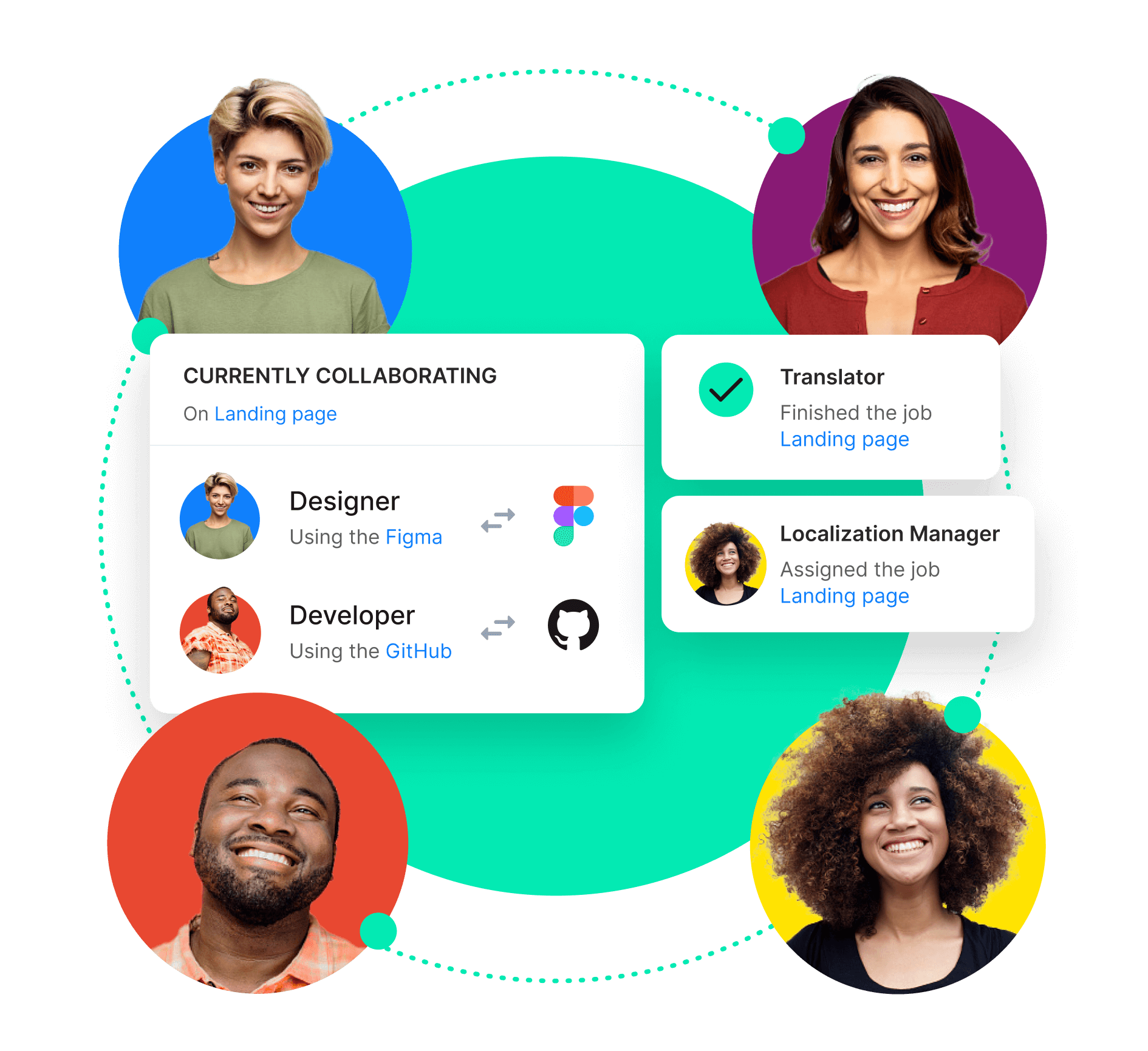Localization strategy
Video Game Localization: How to successfully expand globally

Ever since PUBG: Battlegrounds launched in 2017, the online video game from South Korea has turned into a truly global hit. With 12 localized language versions and marketing trimmed to specific geographies, staggeringly it has been downloaded over 1bn times worldwide and is the 5th best-selling video game of all time.
If you also aspire for your video game to compete on a global scale, making it fit for each of your target markets is essential. Meeting the cultural preferences of players not only encourages initial adoption but also contributes to sustained engagement. To maximize these benefits, you need a well-defined video game localization strategy and robust technology.
What is video game localization?
Video game localization is the process of adapting a video game to the culture and language of players in a target market. It encompasses elements such as spoken dialogues and instructions, characters, game manuals, marketing assets, and many more. That’s why localization in video gaming often involves many stakeholders, from product managers and developers to translators and marketing specialists.
To help you kickstart your journey, this guide breaks down why localization matters for thriving in the global video game market and outlines its key advantages. You will also discover common pitfalls to steer clear of and practical guidelines on setting up your game localization process for long-term success.
The rise of the global video game market
The global gaming market is on a steady rise. In 2024 projected revenue is set to reach $282bn seeing rapid growth over the past few years, mainly through mobile games. Their advantage over console games is that they’re accessible to anyone with a smartphone. Global video game market revenue is set to grow at an annual rate of 8.76% between 2024 and 2027, and is expected to reach $363bn by 2027—with China, the United States, and Japan being the dominant game markets.

Most of the world’s largest video game markets are non-English speaking (source: Statista)
Why is video game localization important?
As there might be many linguistic and cultural differences between your home market and your target markets, achieving global reach with the same version of your game in one language across all markets is unlikely. Below are the elements that usually vary from region to region:
- Language: Even if many global players speak English, there is a risk that they will misunderstand the game if it isn’t adapted to their native language. “Tony Hawk’s Pro Skater” is a localization example that shows the importance of linguistic adaptation. In Europe, the name of the US video game is “Tony Hawk’s Skateboarding”, so that customers don’t confuse it with ice skating.
- Cultural references: Adapting references to the local culture and history is important as they may vary a lot between countries. For example, one of the most popular Chinese games, “Honor of Kings” launched under the name “Arena of Valor” in Western markets. Indeed, only the Chinese version of the name contains the word ‘Kings’ because in the history of China, monarchs have played a central role whereas in several Western regions, such as the US, there has never been a king.
- Local tastes: Local players have more chances to enjoy a game if the designs and appearance fit their tastes and expectations because local culture has a significant impact on brand preferences and loyalty. The Japanese video game developer and publisher Irem understood this well. In the localized US version of their game ‘S.O.S The Final Escape’, most of the characters have blonde hair, whereas they had dark hair in the Japanese version.
- Local legislation: It might be necessary to remove or adapt sensitive content. One of the localization examples that shows how local regulation needs to be considered is Nintendo’s Super Mario Kart. In the Japanese version of the game, two characters drink champagne after winning a race. Nintendo of America’s policies didn’t allow depictions of drinking in games, which required changing the animations.

Comparison of Bowser, the character from Mario Kart, in the Japanese version (left) and the American version (right) © The Mushroom Kingdom
How to localize your video game
Even if each game localization process is different, it’s useful to create a model that explains the key steps.
- Define your localization requirements
The localization strategy is the long-term plan that will guide your product localization and will ensure that your game fits your target markets. At this stage, you should consider your game genre, your target audience, your target countries, and your budget. It’s also necessary to collect and assess the source content of your game to identify which text and non-text in-game content needs to be localized.
The main aspects that will influence the rest of the localization process and the final localized versions of your games include:- When to localize your game: Will it take place parallel to game development or after?
- Which translation and localization technology provider you will rely on: Will the platform allow you to centralize your localization projects in one place and automate workflows? The tool should suit both your development and your localization teams.
- Who will be responsible for localization: If you don’t have any in-house staff who can handle localization, will you outsource localization to a game localization services provider or freelancer.
- Create a localization kit
A localization kit is a way to convey the guidelines of your strategy to your translators. This document includes relevant information about your game’s story, your characters, and your voice. A localization kit will help translators and localization QA testers localize your game and, if they have all the information they need, they won’t ask you many questions during translation. - Prepare your code for localization
Internationalization is the process of designing and developing a digital product so that it can be localized. This step will save you time and effort during the rest of the localization process. Your development team should remove strings from your code to make sure that the game isn’t hard-coded. - Translate content assets
This step is a lengthy process in itself and often requires a lot of back-and-forth communication between the localization and development teams. Your localization team will translate your strings on the translation editor of your localization solution. During the translation process, translators will use your localization kit to remain consistent with the tone of your game. This part of the process is also about translating audio content, such as dialogues between the characters, and subtitles. For instance, if you choose to dub the dialogues, the characters’ voices should be recorded in your target languages. - Perform Language Quality Assurance
Once all the text is localized, it’s important to review the linguistic quality of the text. Proofreaders will go through the translations to identify and correct any spelling, grammar, or syntax mistakes. - Assemble and test your localized game
Finally, you’ll need to pull all the adapted parts back into the game and have native-speaking game testers check the localized versions of your game. Allocating time for localization testing is important because translations without any mistakes outside the game might not actually fit the context, for example, if the translated text doesn’t fit the space allocated for it.
Why is video game localization important?
As there might be many linguistic and cultural differences between your home market and your target markets, achieving global reach with the same version of your game in one language across all markets is unlikely. Below are the elements that usually vary from region to region:
- Language: Even if many global players speak English, there is a risk that they will misunderstand the game if it isn’t adapted to their native language. “Tony Hawk’s Pro Skater” is a localization example that shows the importance of linguistic adaptation. In Europe, the name of the video game from the US is “Tony Hawk’s Skateboarding” so that customers don’t confuse it with ice skating.
- Cultural references: Adapting references to the local culture and history is important as they may vary a lot between countries. For example, one of the most popular Chinese games, “Honor of Kings” launched under the name “Arena of Valor” in Western markets. Indeed, only the Chinese version of the name contains the word ‘Kings’ because in the history of China, monarchs have played a central role whereas in several Western regions, such as the US, there has never been a king.
- Local tastes: Local players have more chances to enjoy a game if the designs and appearance fit their tastes and expectations because local culture has a significant impact on brand preferences and loyalty. The Japanese video game developer and publisher Irem understood this well. In the localized US version of their game ‘S.O.S The Final Escape’, most of the characters have blonde hair, whereas they had dark hair in the Japanese version.
- Local legislation: It might be necessary to remove or adapt sensitive content. One of the localization examples that shows how local regulation needs to be considered is Nintendo’s Super Mario Kart. In the Japanese version of the game, two characters drink champagne after winning a race. Nintendo of America’s policies didn’t allow depictions of drinking in games, which required changing the animations.

Free download
Best practices for developing effective localization strategies
Explore how to tackle localization management efficiently and engage customers across the globe in their native languages and local experiences.
Key challenges in game localization
A video game’s localization often poses some challenges. To help you anticipate these pitfalls and plan accordingly, here are some of the usual hurdles.
- Inefficient procedures and lack of understanding
The process is challenging to streamline because of constant back-and-forth between stakeholders. For example, game developers have to answer a large number of questions—often leading to communication delays. Plus, translators often don’t understand the context well, causing translation mistakes. - Acquiring and retaining talent
Finding and retaining talent is especially important in the context of mobile games. Unlike console games, which represent a finalized product, mobile game development is an ongoing process. To sustain a consistent level of quality, it’s crucial to keep a dedicated group of linguists on board. - Cutting language quality assurance (LQA) time short
As the LQA process consists of checking the translations for mistakes, it happens at the end—right before the release. That’s when the pressure on the release is the highest. Cutting the LQA time is risky as it causes mistakes in the localized game. - Little consideration for localization
It’s common that companies see localization as an afterthought compared to the design and development of the game. Therefore, you might be tempted to buy game localization services at low rates. This would be a risky choice as the video game localizer might not accurately translate. This is a particularly sensitive point in game localization because there are usually a lot of technical terms in video games. Plus, if there are delays during game design and development, it might seem like an easy solution to cut the time allocated to localization. - Timing
You can implement game localization parallel to the general game development, or after. Both options have pros and cons. On the one hand, localizing during game development takes a lot of time and resources, and requires certainty about the markets to target. Moreover, it might be inefficient if game development takes place in a fast-paced and stressful environment.
On the other hand, it’s a good approach if your game is released on an international scale. Companies that have limited financial resources often choose the option to localize after the initial game release. However, it might be more difficult to adapt a fully finished and released game because it’s not possible to localize some of its parts.
Addressing Challenges
Overcoming challenges such as timing, talent acquisition, consideration for localization and quality assurance is key to successful game localization. Starting localization early avoids it being an afterthought and tackles potential code or user interface issues. Acquiring and retaining the right talent, especially those with a passion for language and openness to feedback, is crucial. Implementing efficient query management strategies, like direct stakeholder communication and using platforms for discussion, streamlines the process.
Dive deeper
What is internationalization (i18n)?
Discover why software can effectively adapt to the cultures and languages of global users only through the technical process of internationalization.
Best practices for quality game localization
Game localization is a critical element that ensures your video game resonates with players across different cultures. By implementing best practices and addressing common challenges early on, developers can significantly enhance the quality and appeal of their games globally.
- Incorporate Localization Strategy Early
To achieve high-quality game localization, it’s essential to plan localization from the beginning of the game development process. This involves separating content from code and making your game adaptable to longer character lengths, various fonts, and formats. Early planning also facilitates stakeholder involvement and allows for the inclusion of technical requirements that accommodate different languages and cultural nuances. - Professional Linguists and Team Involvement
Utilizing professional linguists who may not necessarily have a background in gaming but understand your game and are committed to the project is crucial. Involvement in game testing and feedback is encouraged to ensure high-quality translations. Building a strong team atmosphere, whether through in-house teams, freelancers, or language service providers, supports quality localization. It’s important that all team members, including developers, artists, and marketers, understand the localization workflow and their role within it. - Open Communication and Query Management
Simplifying the communication process by allowing stakeholders to directly interact with each other can reduce response times to linguists’ queries and make the localization process more efficient. Integrating query management into localization technology platforms helps manage queries effectively, ensuring they become a routine part of the workflow. Direct communication among developers, in-house translators, and external providers can optimize this process. - Leverage Technology
Next generation localization technologies, such as the AI-powered Phrase Localization Platform, play a pivotal role. These technologies offer solutions for managing localization projects, tracking translation progress, and controlling localization costs. Features like translation vendor management and workflow automation capabilities are instrumental in adapting video games quickly and effortlessly.
Effective game localization enhances a game’s global appeal and player experience. It should be an integral part of the game strategy from the start, given equal importance as graphics, sound, and gameplay. By addressing the challenges of timing, talent, and query management, and leveraging modern technologies, developers can ensure that their game localization efforts are not just an afterthought but a cornerstone of their game’s success.
Designed with the whole team in mind, the Phrase Localization Platform can make your game localization painless from start to finish. The complete localization solution is able to seamlessly integrate with the continuous development process of agile development teams. Among other game localization features, Phrase offers translation vendor management and workflow automation capabilities to make it simpler for teams of any size to adapt video games quickly and effortlessly.

Unlock global business with the Phrase Localization Platform
Expand into new markets with all the tools you need in one technology suite for high-quality, fast, and scalable localization.
Strategic planning is the key to effective game localization
When it comes to taking a video game global, the stakes are high due to the rapid rise of the global video game industry. Customizing video games for local markets is often necessary due to the numerous local specificities.
Since game localization can improve the game adoption by local players, it often brings an increase in revenue and in the number of long-term customers. However, it can become a complicated process with many stakeholders involved.
To make the process a success, it’s essential to take localization into consideration as early as possible and ensure direct and quick communication between everyone involved. In that regard, relying on modern localization technology, like the Phrase Localization Platform, can help you make the most of game localization in the long run.
Speak with an expert
Want to learn how our solutions can help you unlock global opportunity? We’d be happy to show you around the Phrase Localization Platform and answer any questions you may have.





